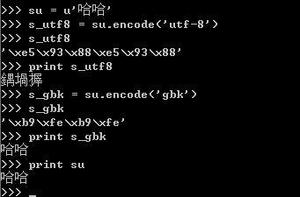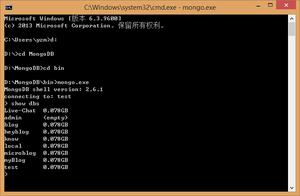Python入门篇-面向对象概述

Python入门篇-面向对象概述
作者:尹正杰
版权声明:原创作品,谢绝转载!否则将追究法律责任。
一.语言的分类
面向机器抽象成机器指令,机器容易理解
代表:汇编语言
面向过程
做一件事情,排出个步骤,第一步干什么,第二步干什么,如果出现情况A,做什么处理,如果出现了情况B,做什么处理。问题规模小,可以步骤化,按部就班处理。
代表:C语言
面向对象OOP
随着计算机需要解决的问题的规模扩大,情况越来越复杂。需要很多人、很多部门协作,面向过程编程不太适合了。代表:C++、Java、Python等
二.面向对象三要素
1>.什么是面向对象
什么是面向对象呢?一种认识世界、分析世界的方法论。将万事万物抽象为各种对象。
类class
类是抽象的概念,是万事万物的抽象,是一类事物的共同特征的集合。
用计算机语言来描述类,是属性和方法的集合。
对象instance、object
对象是类的具象,是一个实体。
对于我们每个人这个个体,都是抽象概念人类的不同的实体。
举例:
你吃鱼:
你,就是对象;鱼,也是对象;吃就是动作
你是具体的人,是具体的对象。你属于人类,人类是个抽象的概念,是无数具体的人的个体的抽象。
鱼,也是具体的对象,就是你吃的这一条具体的鱼。这条鱼属于鱼类,鱼类是无数的鱼抽象出来的概念。
吃,是动作,也是操作,也是方法,这个吃是你的动作,也就是人类具有的方法。如果反过来,鱼吃人。吃就是鱼类的动作了。
吃,这个动作,很多动物都具有的动作,人类和鱼类都属于动物类,而动物类是抽象的概念,是动物都有吃的动作,但是吃法不同而已。
你驾驶车:
这个车也是车类的具体的对象(实例),驾驶这个动作是鱼类不具有的,是人类具有的方法。
属性:
它是对象状态的抽象,用数据结构来描述。
操作:
它是对象行为的抽象,用操作名和实现该操作的方法来描述。
每个人都是人类的一个单独的实例,都有自己的名字、身高、体重等信息,这些信息是个人的属性,但是,这些信息不能保存在人类中,因为它是抽象的概念,不能保留具体的值。
而人类的实例,是具体的人,他可以存储这些具体的属性,而且可以不同人有不同的属性。
哲学
一切皆对象
对象是数据和操作的封装 对象是独立的,但是对象之间可以相互作用。
目前OOP是最接近人类认知的编程范式。
2>.面向对象三要素
封装组装:将数据和操作组装到一起。
隐藏数据:对外只暴露一些接口,通过接口访问对象。比如驾驶员使用汽车,不需要了解汽车的构造细节,只需要知道使用什么部件怎么驾驶就行,踩了油门就能跑,可以不了解其中的机动原理。
博主推荐阅读:https://www.cnblogs.com/yinzhengjie/p/11161519.html
继承多复用,继承来的就不用自己写了
多继承少修改,OCP(Open-closed Principle),使用继承来改变,来体现个性
博主推荐阅读:https://www.cnblogs.com/yinzhengjie/p/11173836.html
多态面向对象编程最灵活的地方,动态绑定
博主推荐阅读:https://www.cnblogs.com/yinzhengjie/p/11179289.html
举例:
人类就是封装;
人类继承自动物类,孩子继承父母特征。分为单一继承、多继承;
多态,继承自动物类的人类、猫类的操作”吃“不同。
三.Python的类
1>.Python类定义格式
class ClassName:语句块。
Python类定义格式如上所示,我们需要注意以下几点:
1. 必须使用class关键字
2. 类名必须是用大驼峰,本质上就是一个标识符
3. 类定义完成后,就产生了一个类对象,绑定到了标识符ClassName上
2>.类对象及类属性
1 #!/usr/bin/env python2 #_*_conding:utf-8_*_
3 #@author :yinzhengjie
4 #blog:http://www.cnblogs.com/yinzhengjie
5
6 class MyClass:
7 """ A Example Class."""
8 CLASSNAME = "bigdata & devops" #类属性,也可以称之为类的变量。需要注意它和实例变量的区别。实例变量是每一个实例自己的变量,是自己独有的;类变量是类的变量,是类的所有实例共享的属性和方法。一般来说,类变量可使用全大写来命名。即表示常量。
9
10 """
11 1>.通常,每次实例化后获得的实例,是不同的实例,即使是使用同样的参数实例化,也得到不一样的对象。和Java语法类似,Python类实例化过程中,
12 首先会调用new方法进行实例化(可以理解为创建出对象),然后会自动调用 __init__ 方法(可以理解为对已经创建出的对象进行初厂设置)。这个方法第
13 一个形式参数必须留给self,其它形式参数随意。
14 2>.该方法可以不定义,如果定义会在实例化后隐式调用。它的作用就是对实例进行初始化。
15 3>.该方法不能有返回值,也就是只能return None。
16 """
17 def __init__(self,name:str,age:int):
18 """
19 我们知道self表示的是当前实例对象,我们这里为当前实例绑定2个实例变量(即name和age),它并不属于类属性,它属于实例对象。
20 """
21 self.name = name
22 self.age = age
23
24 """
25 类的普通方法(method),也是类属性。本质上就是普通的函数对象function,它一般要求至少有一个参数。第一个形式参数可以是self(self只是个
26 惯用标识符,可以换名字),这个参数位置就留给了self。它指代当前实例本身。
27 类实例化后,得到一个实例对象,实例对象会绑定到方法上,即会把方法的调用者实例作为第一参数self的实参传入。
28 """
29 def showme(self): #类
30 return self.name
31
32
33 print(MyClass) #不会调用"__init__"方法,因为咱们没有对MyClass类进行实例化操作。
34 print(MyClass.showme)
35 print(MyClass.__doc__) #注意,这里的"__doc__"也是类的特殊属性。
36 print(MyClass.__name__) #对象名
37 print(MyClass.__class__) #对象的类型
38 print(MyClass.__dict__) #对象的属性字典
39 print(MyClass.__qualname__) #类的限定名
40
41 print("{0} {1} {0}".format("*"*10,"注意:Python中每一种对象都拥有不同的属性。函数是对象,类是对象,类的实例也是对象。"))
42
43 s1 = MyClass("Jason",18) #实例化过程中会自动调用"__init__"方法进行初始化操作,然后类实例化后一定会获得一个类的实例,它就是实例对象s1。
44 print(s1.showme()) #s1是Myclass类实例化后得到的一个实例对象,实例对象会绑定到方法上,因此我们这里就不需要为 showme(self)方法传参,直接调用即可,如果有2个或以上参数那调用时除了第一个参数不需要传递外,其他参数依旧是要传入的哟。
45 print(s1.__dict__)
46
47
48
49
50 #以上代码输出结果如下:
51 <class '__main__.MyClass'>
52 <function MyClass.showme at 0x10215fae8>
53 A Example Class.
54 MyClass
55 <class 'type'>
56 {'__module__': '__main__', '__doc__': ' A Example Class.', 'CLASSNAME': 'bigdata & devops', '__init__': <function MyClass.__init__ at 0x10215f950>, 'showme': <function MyClass.showme at 0x10215fae8>, '__dict__': <attribute '__dict__' of 'MyClass' objects>, '__weakref__': <attribute '__weakref__' of 'MyClass' objects>}
57 MyClass
58 ********** 注意:Python中每一种对象都拥有不同的属性。函数是对象,类是对象,类的实例也是对象。 **********
59 Jason
60 {'name': 'Jason', 'age': 18}
3>.实例属性的查找顺序
1 #!/usr/bin/env python2 #_*_conding:utf-8_*_
3 #@author :yinzhengjie
4 #blog:http://www.cnblogs.com/yinzhengjie
5
6 """
7 总结
8 是类的,也是这个类所有实例的,其实例都可以访问到;
9 是实例的,就是这个实例自己的,通过类访问不到。
10 类变量是属于类的变量,这个类的所有实例可以共享这个变量。
11 对象(实例或类)可以动态的给自己增加一个属性(赋值即定义一个新属性)。
12 实例.__dict__[变量名] 和 实例.变量名 都可以访问到实例自己的属性(注意这两种访问是有本质区别的)。 实例的同名变量会隐藏掉类变量,或者说是覆盖了这个类变量。但是注意类变量还在那里,并没有真正被覆盖。
13
14 实例属性的查找顺序
15 指的是实例使用 .点号 来访问属性,会先找自己的 __dict__ ,如果没有,然后通过属性 __class__ 找到自己的类,再去类的 __dict__ 中找
16 注意:如果实例使用 __dict__[变量名] 访问变量,将不会按照上面的查找顺序找变量了,这是指明使用字典的key 查找,不是属性查找。
17 """
18
19 class Person:
20 age = 3 #一般来说,类变量可使用全大写来命名。我们这里为了实验效果,故意将类变量和实例变量命令部分重复以达到测试目的。
21 height = 170
22
23 def __init__(self,name,age=18):
24 self.name = name
25 self.age = age
26
27
28 tom = Person("Tom")
29 jason = Person("Jason",20)
30
31 Person.age = 30
32 print(1,Person.age,tom.age,jason.age)
33 print(2,Person.height,tom.height,jason.height)
34
35 jason.height = 175 #动态为jason对象设置"height"属性
36 print(3,Person.height,tom.height,jason.height)
37
38 tom.height += 10 #其实等价于tom.height = tom.height + 10,由于tom的"__dict__"没有"height"属性,因此它会去Person类的"__dict__中找"
39 print(4,Person.height,tom.height,jason.height)
40
41 Person.height += 15
42 print(5,Person.height,tom.height,jason.height)
43
44 Person.weight = 70
45 print(6,Person.weight,tom.weight,jason.weight)
46
47 print(7,Person.__dict__)
48 print(8,tom.__dict__)
49 print(9,jason.__dict__)
50
51 print(10,tom.__dict__["height"])
52 # print(11,tom.__dict__["weight"]) #会抛出"KeyError: 'weight'"异常!
53
54
55
56 #以上代码输出结果如下:
57 1 30 18 20
58 2 170 170 170
59 3 170 170 175
60 4 170 180 175
61 5 185 180 175
62 6 70 70 70
63 7 {'__module__': '__main__', 'age': 30, 'height': 185, '__init__': <function Person.__init__ at 0x10205fae8>, '__dict__': <attribute '__dict__' of 'Person' objects>, '__weakref__': <attribute '__weakref__' of 'Person' objects>, '__doc__': None, 'weight': 70}
64 8 {'name': 'Tom', 'age': 18, 'height': 180}
65 9 {'name': 'Jason', 'age': 20, 'height': 175}
66 10 180
四.装饰一个类(即类装饰器)
1 #!/usr/bin/env python2 #_*_conding:utf-8_*_
3 #@author :yinzhengjie
4 #blog:http://www.cnblogs.com/yinzhengjie
5
6 """
7 需求,为一个类通过装饰,增加一些类属性。例如能否给一个类增加一个NAME类属性并提供属性值.
8 """
9 def add_name(name):
10 def wrapper(cls):
11 cls.NAME = name
12 return cls
13 return wrapper
14
15 @add_name("Jason")
16 class Person:
17 AGE = 18
18
19 print(Person.NAME) #之所以能够装饰,本质上是为类对象动态的添加了一个属性,而Person这个标识符指向这个类对象。
20
21
22
23 #以上代码输出结果如下:
24 Jason
五.类方法和静态方法
1>.普通函数(最好禁止在类中定义无参函数)
1 #!/usr/bin/env python2 #_*_conding:utf-8_*_
3 #@author :yinzhengjie
4 #blog:http://www.cnblogs.com/yinzhengjie
5
6 class Person:
7 def __init__(self,name,age):
8 self.name = name
9 self.age = age
10
11 def normal_method(): #注意:在Python中虽然语法是对的,但是,没有人这么用,也就是说禁止这么写
12 print("normal")
13
14
15 Person.normal_method() #可以放在类中定义,因为这个方法只是被Person这个名词空间管理的一个普通的方法,normal_method是Person 的一个属性而已。类是可以调用的,但该类的实例不能调用该方法。
16
17 p1 = Person("Jason",18)
18
19 # p1.normal_method() #由于normal_method在定义的时候没有指定形参self,所以不能完成实例对象的绑定,因此p1实例不能调用。只要一调用就会为normal_method传递一个self参数,而原方法是一个无参函数。只要一调用该方法就报错!!!
2>.类方法
1 #!/usr/bin/env python2 #_*_conding:utf-8_*_
3 #@author :yinzhengjie
4 #blog:http://www.cnblogs.com/yinzhengjie
5
6 class Person:
7 def __init__(self,name,age):
8 self.name = name
9 self.age = age
10
11 """
12 类方法:(类似于C++、Java中的静态方法)
13 1>.在类定义中,使用@classmethod装饰器修饰的方法
14 2>.必须至少有一个参数,且第一个参数留给了cls,cls指代调用者即类对象自身
15 3>.cls这个标识符可以是任意合法名称,但是为了易读,请不要修改
16 4>.通过cls可以直接操作类的属性
17
18 注意:无法通过cls操作类的实例。为什么?
19 """
20 @classmethod
21 def class_method(cls):
22 print("class = {0.__name__} ({0})".format(cls))
23 print("class = {0.__dict__} ({0})".format(cls))
24
25
26 Person.class_method() #使用类对象直接调用类方法,访问的是类的属性
27
28 jason = Person("Jason",18)
29 jason.class_method() #使用类的实例化对象调用类方法,访问的还是类的属性
30
31
32
33 #以上代码输出结果如下:
34 class = Person (<class '__main__.Person'>)
35 class = {'__module__': '__main__', '__init__': <function Person.__init__ at 0x10215fae8>, 'class_method': <classmethod object at 0x1005aea58>, '__dict__': <attribute '__dict__' of 'Person' objects>, '__weakref__': <attribute '__weakref__' of 'Person' objects>, '__doc__': None} (<class '__main__.Person'>)
36 class = Person (<class '__main__.Person'>)
37 class = {'__module__': '__main__', '__init__': <function Person.__init__ at 0x10215fae8>, 'class_method': <classmethod object at 0x1005aea58>, '__dict__': <attribute '__dict__' of 'Person' objects>, '__weakref__': <attribute '__weakref__' of 'Person' objects>, '__doc__': None} (<class '__main__.Person'>)
3>.静态方法
1 #!/usr/bin/env python2 #_*_conding:utf-8_*_
3 #@author :yinzhengjie
4 #blog:http://www.cnblogs.com/yinzhengjie
5
6 class Person:
7 def __init__(self,name,age):
8 self.name = name
9 self.age = age
10
11 @classmethod
12 def class_method(cls):
13 print("class = {0.__name__} ({0})".format(cls))
14 cls.HEIGHT = 170
15 """
16 静态方法
17 1>.在类定义中,使用@staticmethod装饰器修饰的方法
18 2>.调用时,不会隐式的传入参数
19 静态方法,只是表明这个方法属于这个名词空间。函数归在一起,方便组织管理。
20 """
21 @staticmethod
22 def static_methd(cls):
23 print(Person.HEIGHT)
24
25 Person.class_method()
26
27 jason = Person("Jason",18)
28
29 Person.static_methd(jason) #使用类对象调用静态方法时,需要手动传入参数。
30
31 print(Person.__dict__)
32 print(jason.__dict__)
33
34 #以上代码执行结果如下:
35 class = Person (<class '__main__.Person'>)
36 170
37 {'__module__': '__main__', '__init__': <function Person.__init__ at 0x10205fae8>, 'class_method': <classmethod object at 0x102061208>, 'static_methd': <staticmethod object at 0x102061080>, '__dict__': <attribute '__dict__' of 'Person' objects>, '__weakref__': <attribute '__weakref__' of 'Person' objects>, '__doc__': None, 'HEIGHT': 170}
38 {'name': 'Jason', 'age': 18}
4>.方法的调用
1 #!/usr/bin/env python2 #_*_conding:utf-8_*_
3 #@author :yinzhengjie
4 #blog:http://www.cnblogs.com/yinzhengjie
5
6 """
7 类可以定义这么多种方法,究竟如何调用它们?
8 总结:
9 类除了普通方法都可以调用,普通方法需要类对象的实例作为第一参数。
10 实例可以调用所有类中定义的方法(包括类方法、静态方法),普通方法传入实例自身,静态方法和类方法需要找到实例的类(因为实例"__dict__"中没有
11 静态方法和类方法属性,他得去实例的类中"__dict__"的去查找想要的属性)。
12 """
13
14
15 class Person:
16 """
17 我们称没有用"classmethod"或"staticmethod"装饰器修饰的方法为普通方法。
18 类几乎可以调用所有内部定义的方法,但是调用普通的方法时会报错,原因是第一参数必须是类的实例。
19 实例也几乎可以调用所有的方法, 普通的函数的调用一般不可能出现,因为原则上不允许这么定义。
20 """
21 def method(self):
22 print("{}'s method".format(self))
23
24 @classmethod
25 def class_method(cls): # cls是什么
26 print('class = {0.__name__} ({0})'.format(cls))
27 cls.HEIGHT = 170
28
29 @staticmethod
30 def static_methd():
31 print(Person.HEIGHT)
32
33 print("{0} {1} {0}".format("*"*10,"类访问"))
34 #print(1, Person.method()) #会抛出异常,因为咱们类调用普通方法需要手动传参数,而实例调用由于做了实例绑定,因此实例调用则不需要传参数哟。
35 print(2, Person.class_method())
36 print(3, Person.static_methd())
37
38
39
40 print("{0} {1} {0}".format("*"*10,"jason实例访问"))
41 jason = Person()
42 print(4, jason.method())
43 print(5, jason.class_method())
44 print(6, jason.static_methd())
45
46 print("{0} {1} {0}".format("*"*10,"对比类对象和类实例对象"))
47 print(7,"Person:{}\t Person实例:{}\t".format(Person.method,jason.method)) #我们可以通过打印Person和Person实例的普通方法地址就可以看出点端倪,实例对象被普通方法做了实例绑定。
48 print(8,Person.__dict__)
49 print(9,jason.__dict__)
50
51
52 #以上代码输出结果如下:
53 ********** 类访问 **********
54 class = Person (<class '__main__.Person'>)
55 2 None
56 170
57 3 None
58 ********** jason实例访问 **********
59 <__main__.Person object at 0x102961208>'s method
60 4 None
61 class = Person (<class '__main__.Person'>)
62 5 None
63 170
64 6 None
65 ********** 对比类对象和类实例对象 **********
66 7 Person:<function Person.method at 0x10295fae8> Person实例:<bound method Person.method of <__main__.Person object at 0x102961208>>
67 8 {'__module__': '__main__', '__doc__': '\n 我们称没有用"classmethod"或"staticmethod"装饰器修饰的方法为普通方法。\n 类几乎可以调用所有内部定义的方法,但是调用普通的方法时会报错,原因是第一参数必须是类的实例。\n 实例也几乎可以调用所有的方法, 普通的函数的调用一般不可能出现,因为原则上不允许这么定义。\n ', 'method': <function Person.method at 0x10295fae8>, 'class_method': <classmethod object at 0x102907be0>, 'static_methd': <staticmethod object at 0x10294ff60>, '__dict__': <attribute '__dict__' of 'Person' objects>, '__weakref__': <attribute '__weakref__' of 'Person' objects>, 'HEIGHT': 170}
68 9 {}
六.小试牛刀
1>.机整数生成类
可以先设定一批生成数字的个数,可设定指定生成的数值的范围。运行时还可以调整每批生成数字的个数
1 #!/usr/bin/env python2 #_*_conding:utf-8_*_
3 #@author :yinzhengjie
4 #blog:http://www.cnblogs.com/yinzhengjie
5
6 import random
7
8 class RandomGen:
9 def __init__(self,start=1,stop=100,count=10):
10 self.start = start
11 self.stop = stop
12 self.count = count
13
14 def generate(self):
15 return [random.randint(self.start,self.stop) for i in range(self.count)]
16
17
18 print(RandomGen().generate())
19 print(RandomGen(200,1000,5).generate())
20
21
22
23 #以上代码执行结果如下:
24 [25, 32, 14, 7, 15, 94, 41, 68, 85, 58]
25 [715, 428, 920, 954, 217]
参考一:普通类实现
1 #!/usr/bin/env python2 #_*_conding:utf-8_*_
3 #@author :yinzhengjie
4 #blog:http://www.cnblogs.com/yinzhengjie
5
6 import random
7
8 class RandomGen:
9
10 @classmethod
11 def generate(cls,start=1,stop=100,count=10):
12 return [random.randint(start,stop) for i in range(count)]
13
14
15 print(RandomGen().generate())
16 print(RandomGen().generate(200,1000,5))
17
18
19
20 #以上代码执行结果如下:
21 [19, 21, 89, 86, 65, 58, 94, 29, 76, 71]
22 [461, 392, 229, 732, 575]
参考二:作为工具类来实现,提供类方法
1 #!/usr/bin/env python2 #_*_conding:utf-8_*_
3 #@author :yinzhengjie
4 #blog:http://www.cnblogs.com/yinzhengjie
5
6 import random
7
8 class RandomGen:
9 def __init__(self,start=1,stop=100,count=10):
10 self.start = start
11 self.stop = stop
12 self.count = count
13 self._gen = self._generate()
14
15 def _generate(self):
16 while True:
17 yield random.randint(self.start,self.stop)
18
19 def generate(self):
20 return [next(self._gen) for i in range(self.count)]
21
22
23 print(RandomGen().generate())
24 print(RandomGen(200,1000,5).generate())
25
26
27
28 #以上代码执行结果如下:
29 [96, 15, 55, 87, 43, 21, 100, 55, 96, 81]
30 [501, 208, 657, 806, 499]
参考三:生成器实现
1 #!/usr/bin/env python2 #_*_conding:utf-8_*_
3 #@author :yinzhengjie
4 #blog:http://www.cnblogs.com/yinzhengjie
5
6 import random
7
8 class RandomGen:
9 def __init__(self,start=1,stop=100,count=10):
10 self.start = start
11 self.stop = stop
12 self.count = count
13 self._gen = self._generate()
14
15 def _generate(self):
16 while True:
17 yield random.randint(self.start,self.stop)
18
19 def generate(self):
20 yield from (next(self._gen) for i in range(self.count))
21
22
23 print(list(RandomGen().generate()))
24 print(list(RandomGen(200,400,5).generate()))
25
26
27 #以上代码执行结果如下:
28 [51, 25, 94, 2, 16, 75, 9, 20, 2, 21]
29 [285, 211, 249, 271, 309]
参考四:生成器变形一
1 #!/usr/bin/env python2 #_*_conding:utf-8_*_
3 #@author :yinzhengjie
4 #blog:http://www.cnblogs.com/yinzhengjie
5
6 import random
7
8 class RandomGen:
9 def __init__(self,start=1,stop=100,count=10):
10 self.start = start
11 self.stop = stop
12 self.count = count
13 self._gen = self._generate()
14
15 def _generate(self):
16 while True:
17 yield random.randint(self.start,self.stop)
18
19 def generate(self,count=0): #可以后期在产生数据时控制个数。
20 count = self.count if count <= 0 else count
21 return [next(self._gen) for i in range(count)]
22
23
24 print(RandomGen().generate())
25 print(RandomGen(600,900).generate(5))
26
27
28 #以上代码执行结果如下:
29 [36, 84, 45, 26, 32, 91, 42, 75, 49, 36]
30 [647, 885, 642, 857, 852]
参考五:生成器变形二
1 #!/usr/bin/env python2 #_*_conding:utf-8_*_
3 #@author :yinzhengjie
4 #blog:http://www.cnblogs.com/yinzhengjie
5
6 import random
7
8 class RandomGen:
9 def __init__(self,start=1,stop=100,count=10):
10 self.start = start
11 self.stop = stop
12 self._count = count #保护变量
13 self._gen = self._generate()
14
15 def _generate(self):
16 while True: #一次yield一批
17 yield [random.randint(self.start,self.stop) for _ in range(self._count)]
18
19 def generate(self,count=0): #可以后期在产生数据时控制个数。
20 if count > 0:
21 self._count = count
22 return next(self._gen)
23
24 print(RandomGen().generate())
25 print(RandomGen(1000,2000).generate(5))
26
27
28 #以上代码执行结果如下:
29 [51, 20, 52, 31, 64, 47, 43, 75, 47, 98]
30 [1606, 1570, 1063, 1842, 1427]
参考六:生成器变形三
1 #!/usr/bin/env python2 #_*_conding:utf-8_*_
3 #@author :yinzhengjie
4 #blog:http://www.cnblogs.com/yinzhengjie
5
6 import random
7
8 class RandomGen:
9 def __init__(self,start=1,stop=100,count=10):
10 self.start = start
11 self.stop = stop
12 self._count = count #保护变量
13 self._gen = self._generate()
14
15 def _generate(self):
16 while True: #一次yield一批
17 yield [random.randint(self.start,self.stop) for _ in range(self._count)]
18
19 def generate(self):
20 return next(self._gen)
21
22 @property
23 def count(self):
24 return self._count
25
26 @count.setter
27 def count(self,count):
28 self._count = count
29
30 r = RandomGen(100,200)
31 print(r.count)
32 print(r.generate())
33
34 r.count = 5
35 print(r.count)
36 print(r.generate())
37
38
39 #以上代码执行结果如下:
40 10
41 [130, 188, 174, 127, 180, 144, 189, 105, 146, 119]
42 5
43 [157, 145, 168, 131, 105]
参考七:使用property属性装饰器实现
2>.打印坐标
使用上题中的类,随机生成20个数字,两两配对形成二维坐标系的坐标,把这些坐标组织起来,并打印输出
1 #!/usr/bin/env python2 #_*_conding:utf-8_*_
3 #@author :yinzhengjie
4 #blog:http://www.cnblogs.com/yinzhengjie
5
6 import random
7
8 class RandomGen:
9 def __init__(self,start=1,stop=100,count=10):
10 self.start = start
11 self.stop = stop
12 self._count = count #保护变量
13 self._gen = self._generate()
14
15 def _generate(self):
16 while True: #一次yield一批
17 yield [random.randint(self.start,self.stop) for _ in range(self._count)]
18
19 def generate(self):
20 return next(self._gen)
21
22 @property
23 def count(self):
24 return self._count
25
26 @count.setter
27 def count(self,count):
28 self._count = count
29
30 class Point:
31 def __init__(self,x,y):
32 self.x = x
33 self.y = y
34
35 r = RandomGen()
36 points = [Point(x,y) for x,y in zip(r.generate(),r.generate())]
37
38 for p in points:
39 print("{:2}:{:2}".format(p.x,p.y))
40
41
42 #以上代码执行结果如下:
43 44: 1
44 66:59
45 40: 3
46 92:73
47 90:73
48 22:67
49 98:47
50 82:10
51 17:69
52 36:39
参考案例
3>.车辆信息
记录车的品牌mark、颜色color、价格price、速度speed等特征,并实现车辆管理,能增加车辆、显示全部车辆的信息功能
1 #!/usr/bin/env python2 #_*_conding:utf-8_*_
3 #@author :yinzhengjie
4 #blog:http://www.cnblogs.com/yinzhengjie
5
6 class Car:
7 def __init__(self,mark,speed,color,price):
8 self.mark = mark
9 self.speed = speed
10 self.color = color
11 self.price = price
12
13
14 class CarInfo:
15 def __init__(self):
16 self.__info = []
17
18 def addcar(self,car:Car):
19 self.__info.append(car)
20
21 def getall(self):
22 return self.__info
23
24
25 ci = CarInfo()
26 car = Car('audi',400,'red',100)
27 ci.addcar(car)
28
29
30 ci.getall() #返回所有数据,此时再实现格式打印
参考案例
4>.实现温度的处理
1 #!/usr/bin/env python2 #_*_conding:utf-8_*_
3 #@author :yinzhengjie
4 #blog:http://www.cnblogs.com/yinzhengjie
5
6 class Temperature:
7 def __init__(self,t,unit='c'):
8 self._c = None
9 self._f = None
10 self._k = None
11
12 #都要先转换到摄氏度,以后访问再计算其它单位的温度值
13 if unit == 'f':
14 self._f = t
15 self._c = self.f2c(t)
16 elif unit == 'k':
17 self._k = t
18 self._c = self.k2c(t)
19 else:
20 self._c = t
21
22 @property
23 def c(self):
24 return self._c
25
26 @property
27 def f(self): #华氏温度
28 if self._f is None:
29 self._f = self.c2f(self._c)
30 return self._f
31
32 @property
33 def k(self): #开氏温度
34 if self._k is None:
35 self._k = self.c2k(self._c)
36 return self._k
37
38 @classmethod
39 def c2f(cls,c):
40 return 9 * c / 5 + 32
41
42 @classmethod
43 def f2c(cls,f):
44 return (f - 32 ) * 5 / 9
45
46 @classmethod
47 def c2k(cls,c):
48 return c + 273.15
49
50 @classmethod
51 def k2c(cls,k):
52 return k - 273.15
53
54 @classmethod
55 def f2k(cls,f):
56 return cls.c2k(cls.f2c(f))
57
58 @classmethod
59 def k2f(cls,k):
60 return cls.c2f(cls.k2c(k))
61
62 print(Temperature.c2f(30))
63 print(Temperature.f2c(108))
64 print(Temperature.c2k(30))
65 print(Temperature.k2c(520.13))
66 print(Temperature.f2k(108))
67 print(Temperature.k2f(520.13))
68
69 print("{0} 我是分割线 {0}".format("*" * 20))
70
71
72 t = Temperature(108,'f')
73 print(t.__dict__)
74 print(t.c,t.k,t.f)
75 print(t.__dict__)
76
77
78
79 #以上代码执行结果如下:
80 86.0
81 42.22222222222222
82 303.15
83 246.98000000000002
84 315.3722222222222
85 476.564
86 ******************** 我是分割线 ********************
87 {'_c': 42.22222222222222, '_f': 108, '_k': None}
88 42.22222222222222 315.3722222222222 108
89 {'_c': 42.22222222222222, '_f': 108, '_k': 315.3722222222222}
参考案例
5>. 模拟购物车购物
1 #!/usr/bin/env python2 #_*_conding:utf-8_*_
3 #@author :yinzhengjie
4 #blog:http://www.cnblogs.com/yinzhengjie
5
6
7 class Color:
8 RED = 0
9 BLUE = 1
10 GREEN = 2
11 GOLDEN = 3
12 BLACK = 4
13 OTHER = 1000
14
15
16 class Item:
17 def __init__(self,**kwargs):
18 self.__spec = kwargs
19
20 def __repr__(self):
21 return str(sorted(self.__spec.items()))
22
23
24 class Cart:
25 def __init__(self):
26 self.items = []
27
28 def additem(self,item:Item):
29 self.items.append(item)
30
31 def getallitems(self):
32 return self.items
33
34 mycart = Cart()
35 myphone = Item(mark="Huawei",color=Color.GOLDEN,memory="4G")
36 mycart.additem(myphone)
37
38 mycar = Item(mark="Red Flag",color = Color.BLACK,year=2019)
39 mycart.additem(mycar)
40
41 print(mycart.getallitems())
42
43
44
45 #以上代码执行结果如下:
46 [[('color', 3), ('mark', 'Huawei'), ('memory', '4G')], [('color', 4), ('mark', 'Red Flag'), ('year', 2019)]]
参考案例
以上是 Python入门篇-面向对象概述 的全部内容, 来源链接: utcz.com/z/388878.html







